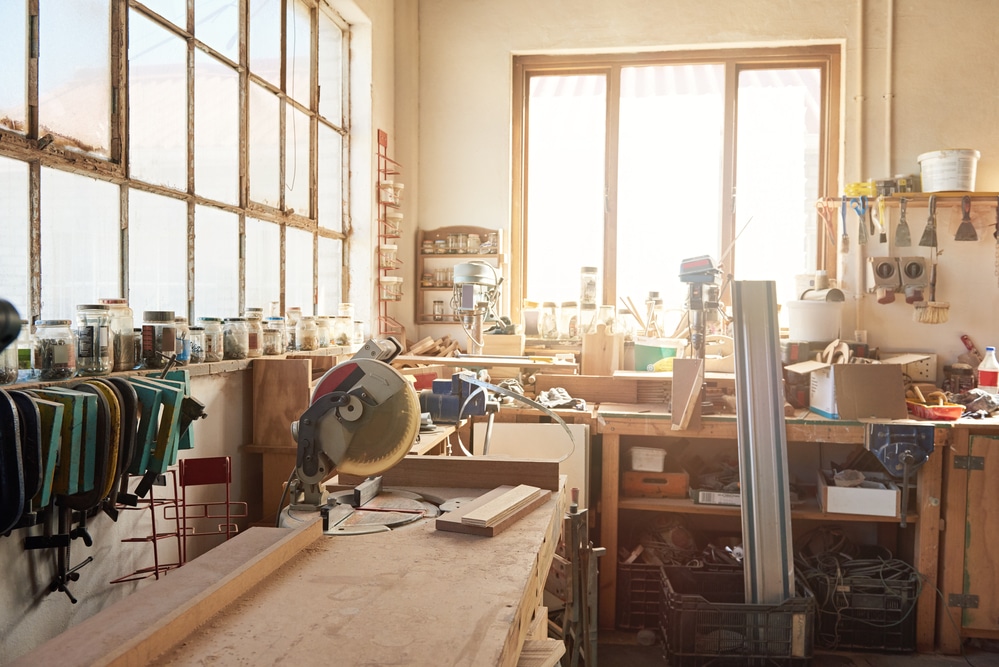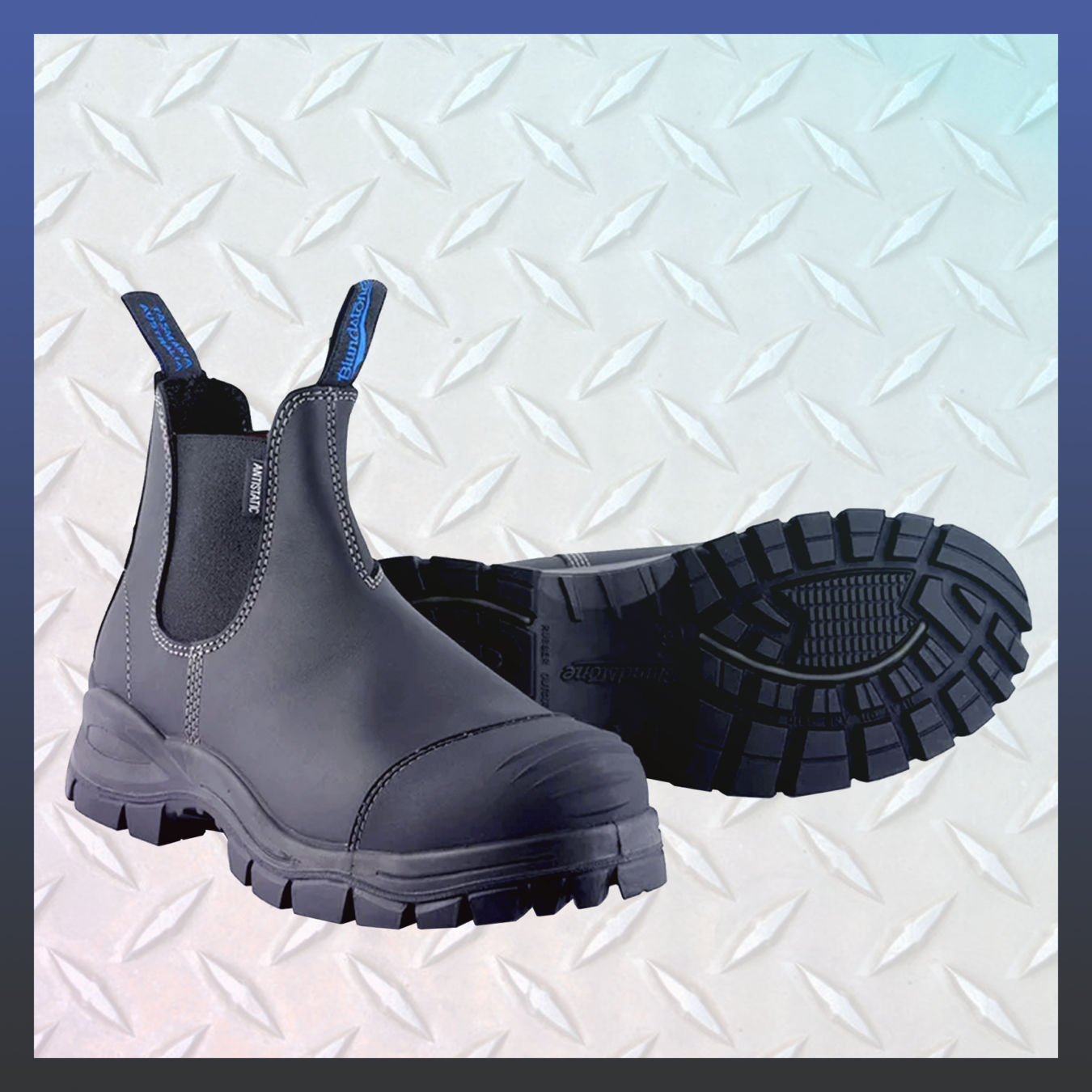It’s easy to get caught up in the excitement of new DIY projects and straight look past any potential hazards involved, especially if you’ve got some experience in DIY already.

We hope you’ve already got a pair of safety boots, but if you haven’t picked some up yet – we’re here to tell you exactly why they are an essential part of any project…
Too long; didn’t read: Quite frankly, yes. Make sure you have a pair of decent safety boots for DIY projects. Your feet and wallet will thank you in the long run. Check for safety ratings and make sure they fit well.
The Rise of DIY
With the current economy, more and more people are looking for ways to save money, that means more people are getting into DIY than ever before, especially off the back of covid lockdowns when people suddenly had lots of time for home improvement projects. YouTube tutorials are amazing for ideas and we spend a lot of time watching these too, but more often than not, social media creators massively fail to highlight the importance of health and safety.
You may think we are being dramatic but the fact is, when it comes to working with power tools, ladders and heavy materials it can and does lead to serious injuries and even disabilities. The Guardian published that in the UK alone, National Health Service data suggests that more than 8,300 people required hospital care between 2020 and 2021, due to DIY accidents – granted, this is more than previous years due to lockdown trends but it does put things into perspective.
How Safety Boots Keep You Safe
Besides the obvious point of preventing your feet from being crushed, thanks to steel toe caps, there are many other features found in safety boots that are worth benefiting from. You’ll also want to ensure your feet don’t get cut by any sharp material and that you aren’t exposed to slipping on spilled materials such as oils. Some boots are even heat proof which is especially important when working around electrics and metals.
Key Safety Features on the Market:
- Slip Resistant Soles
- Anti Static materials
- Protective toe caps
- Anti-abrasion
- Hot Oil, Fat and Acid resistant
- Antibacterial Qualities (for cleaning and foot hygiene)

Why it’s Important to Buy Quality Safety Boots
Despite the current economy and the need to save costs wherever possible, safety is the one area where you don’t want to skimp. Paying out for a decent pair of safety boots is something you’ll want to consider and although the cost might be a bit of a sting up front, they’ll last longer and you’ll save money in the long term. Simply said, you get what you pay for when it comes to safety gear.
You might think to pick up a cheap pair as you’ll only be doing one or two projects – but you’d be surprised how often a good pair of safety boots comes in useful, such as moving furniture, working in the garage and all sorts of other uses – they’re not only useful for DIY projects.
It’s important to be able to recognise bad quality safety boots, more so than general footwear and that’s because these use rigid materials which can actually cause a fair amount of damage to your feet if they’re not made correctly. Bad quality safety boots are known to squash toes, compress heels and cause ankle injuries over long periods of times – especially if you’re wearing them for long periods of time.
We’ve spent some time looking through popular brands and options and some of our favourites are the Blundstone Safety Series. Blundstone are known for being Aussie working boots but a lot of their footwear is fashion focused. This particular series is all about safety features and providing support, whilst still looking great. For a reasonable price the Blundstone safety boots are more than adequate for getting a job done properly and are packed with features, they’re also available for women.
Areas to Look Out For When Shopping
Safety Ratings:
Industries such as farming and construction know the importance of safety boots being top quality, due to this there are many safety boards and rating organisations all over the world. We won’t list these here but a good manufacturer will include this detail in the product description. This is a simple and quick way to make sure you’re buying a quality pair of safety boots.
Squashed toes:
Steel toe caps are great for preventing injuries when working with heavy tools and materials, but if your toes feel squished and compressed when you’re standing still, get a different pair of boots.
Uncomfortable fit:
You may be one of those people who wants to just get on with the project, but if you notice your boots are uncomfortable from day 1, don’t just ignore it and hope they’ll “wear in”. This is a red flag for safety boots, generally they should fit well and offer support from the first wear.
Ankle looseness:
We’ll keep this one simple, because it’s so important. Your ankles need to be secure and feel protected, when trying on safety boots, give them a twist and bend your legs etc. Check that your ankles are nice and snug (not too tight!), when you’re walking on uneven terrain you don’t want to twist or sprain your ankle, this is a very a common issue with cheap and low quality boots.
Low quality stitching:
Stitching is a good area for checking the build quality of boots, this is an easy way to check for inconsistencies and alignment issues with materials. If you notice any poor stitching patterns or errors then it’s likely the boots were made by low skilled employees, or the company is skimping costs to the point where employees are overworked and not focused on producing quality goods. You want to look for even stitching, double stitching and tidy ends to stitched areas.
Reviews:
There’s no better way to know how boots last over time than checking customer product reviews. It’s better to spend a bit of time upfront when considering a pair of boots to make sure you get the right ones. Get on YouTube to see if anyones posted video reviews too, these are often more informative.
Summarising the Need for Safety Boots
We hope that this article has helped highlight (and remind you of) the importance of safety when it comes to footwear. It’s when we become confident and relaxed around power tools and heavy materials when accidents happen. You’ve only got one pair of feet – so look after them. If we’ve missed any important areas or if you have any useful safety tips feel free to get in touch as we’d love to hear from you. Good luck with your DIY projects!

